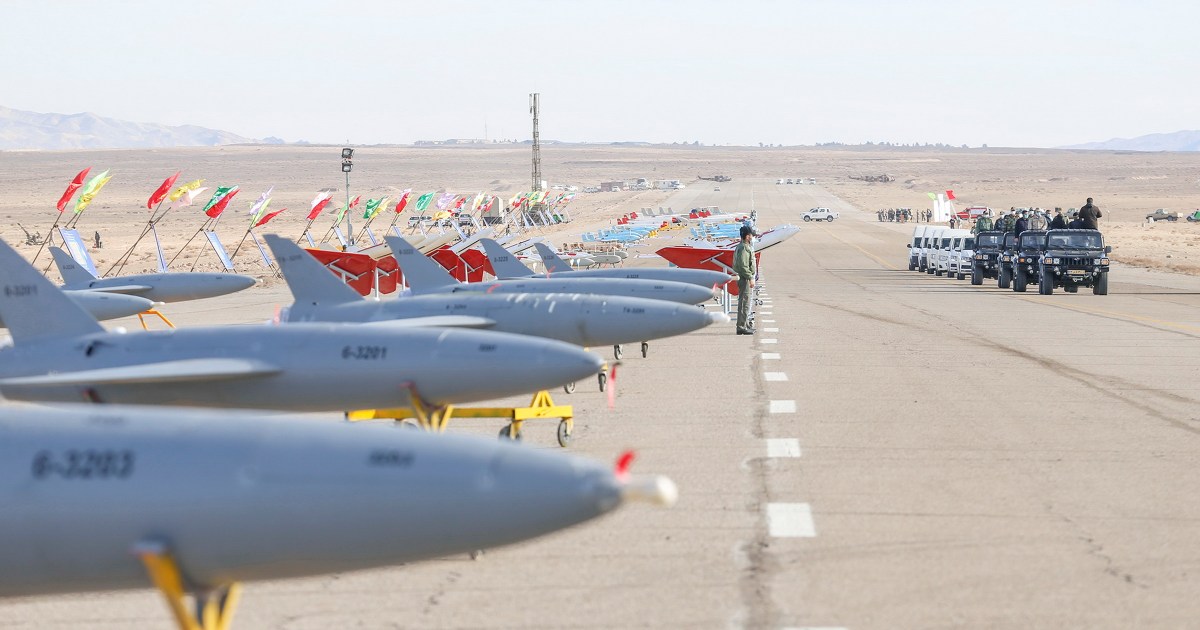The newspaper " The
Wall Street Journal" (published the
Wall Street Journal Unit
)
report
on the
development of
Iran 's
aircraft march and use this capability as describing increasing rapidly and cause a change the
balance of
power in the
Middle East, America and its allies and challenge in the
region.
The report quoted US, European and Israeli defense officials as saying that this Iranian ability is changing the security equation in a region already on the edge of the abyss.
He pointed to the increase in Iranian attacks and those of its allies in the region with drones, such as the deadly attack on the Israeli oil tanker in the Arabian Sea, launching drones from the Gaza Strip on Israeli neighborhoods, and strikes on Saudi refineries and pipelines and on bases housing US forces in Iraq, as well as their use in Syrian war.
It was the preserve of America and Israel
He said that armed drones were for decades the monopoly of advanced armies such as the US and Israel, and in the recent period Turkey, a member of the North Atlantic Treaty Organization (NATO), has made great strides in developing effective and low-cost drones.
The newspaper pointed out that Tehran's engineers rely on imported, ready-made components to create air vehicles that can accurately hit targets at long distances, change direction quickly to avoid air defenses and radar, and are often made with widely available components used in the ever-growing commercial drone market and by hobbyists, and mimic some Iranian designs Israeli and American designs.
The newspaper quoted an Iranian official as saying that it may take years to develop a nuclear weapon, but to manufacture and use drones takes a few months. "These planes changed the balance of power in the Middle East."
Manufacturer in Iran
It said Iran's drone program could be traced back to the Iran Aircraft Manufacturing Company, a military-controlled company that operates a plane factory in central Isfahan.
The plant was originally set up in the 1970s by US defense contractor Textron to build military helicopters, at a time when Iran's ruling monarch, Shah Mohammad Reza Pahlavi, was a key Washington ally in the region.
It stated that the state-owned project finally received a significant cash injection, raising its capital to the equivalent of $271.5 million from $1.5 million, according to company records.
It quoted an Israeli official as saying that the United States and other Western countries underestimated the dangers of the Iranian drone program and called on them to take tougher steps, adding, "There may come a time when they become bolder, braver and less deterrent."
The Wall Street Journal drew attention to the fact that Washington announced earlier that it was preparing to expand sanctions against the Iranian drone program.
Sanctions are useless
But Kirsten Fontrose, a former director focused on Persian Gulf affairs at the White House National Security Council, said the sanctions may not be able to affect Iran's program because drones often rely on off-the-shelf commercial components that can be purchased online to assemble harmless, controlled tools. By radio, it is difficult to effectively prevent such sales.
The newspaper stated that Iran was able to successfully arm its Houthi allies in Yemen by using a network of trading companies around the world to purchase components, including some companies that evaded sanctions, and that loopholes in the global export control system enable Iran to purchase these materials and enable networks The Houthis are allowed to buy vital ingredients without going through Iran.
She added that the Iranian drones use in Iraq, Yemen and Gaza the engine design (DLE-111), which is manufactured by Mile Hao Xiang Technology Co. Ltd., and sells it on the Chinese e-commerce site "Alibaba" ) for $500.
from all over the world
Iranian drones used against coalition forces in Yemen have found an advanced South Korean-made component that was traced to a toy store in Tehran that sells remote-controlled model aircraft, including miniature versions of US jet fighters, according to a UN investigation.
Iran has also found other ways to obtain advanced technology. The United Nations investigation into the triangular-winged drones found that a key component had been made in Sweden, shipped to Tehran via an Indian food trading company, and then assembled in the drones used in strikes against Saudi oil facilities. .
Western and Israeli technology
Iran used copies of the most sensitive pieces of technology developed by American and Israeli companies, as well as a replica of a high-performance engine made by a British unit of the Israeli defense contractor Elbit Systems, and a person familiar with Elbit operations said that the engine technology was developed in Britain. , not in Israel.
The newspaper pointed out that one of the Iranian drones used in the Syrian civil war relies heavily on the Israeli "Hermes 450", and Israeli officials suspect that Iran received the Hermes model from Tehran's Lebanese ally, Hezbollah, after it crashed in Lebanon.

